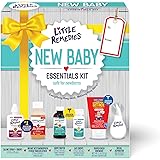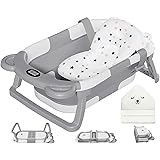The Cocomelon “Humpty Dumpty Grocery Store” video is a delightful journey that captures the imagination of young children, turning an everyday outing into a musical adventure. While watching Humpty Dumpty navigate the aisles, parents might wonder how to transform such simple, repetitive content and familiar tasks into valuable learning opportunities for their little ones. The good news is, engaging with nursery rhymes and routine activities like grocery shopping offers a treasure trove of developmental benefits. We can easily harness the power of these experiences to foster crucial early learning skills.
1. The Timeless Appeal of Humpty Dumpty and Nursery Rhymes
The story of Humpty Dumpty is known and loved by generations. This classic nursery rhyme, featured so prominently in the Cocomelon video, tells a simple yet memorable tale. It captivates children with its catchy tune and easy-to-follow narrative, even if the ending is a bit sad for our egg friend. The repetition of the rhyme helps children to learn new words and phrases, building their vocabulary with each listen.
Nursery rhymes like “Humpty Dumpty” are much more than just songs; they are fundamental tools for early childhood education. They introduce rhythm and rhyme, which are critical precursors to reading skills. The simple language makes them accessible, allowing even toddlers to follow along and anticipate the next line.
2. Beyond the Melody: Developmental Benefits of Nursery Rhymes
Engaging with Cocomelon’s “Humpty Dumpty” and other nursery rhymes provides a host of developmental advantages for young children. These benefits extend across various domains, supporting holistic growth. From language acquisition to emotional understanding, the power of these simple songs is immense.
Here are some key ways nursery rhymes boost development:
-
Language and Literacy Skills: Regular exposure to nursery rhymes helps children develop phonological awareness, which is the ability to recognize and manipulate sounds in spoken language. This is a foundational skill for learning to read. Children pick up new vocabulary and understand sentence structure.
-
Memory and Sequencing: The repetitive nature of rhymes aids in memory retention. Children learn to recall patterns and sequences of events, a cognitive skill that transfers to many other areas of learning. Anticipating the next line is a mini-exercise in prediction.
-
Motor Skills: Many nursery rhymes, including “Humpty Dumpty,” lend themselves to actions and gestures. Encouraging children to act out the “fall” or to clap along improves their gross and fine motor skills. This kinesthetic learning helps solidify the rhyme in their minds.
-
Emotional and Social Development: Sharing a song with a parent or caregiver fosters a bond and a sense of security. Rhymes can also help children explore simple emotions like surprise or empathy. The shared experience builds social connections and communication skills.
-
Cognitive Development: Concepts like cause and effect (“sat on a wall,” “had a great fall”) are introduced in a simple, understandable way. Children begin to grasp narrative structure and problem-solving, even if the “problem” of putting Humpty back together isn’t solved.
3. Learning Adventures at the Grocery Store: Inspired by Cocomelon
The Cocomelon “Humpty Dumpty Grocery Store” video brilliantly uses an everyday setting to tell a story. This offers a fantastic blueprint for parents looking to make their own grocery trips educational. A visit to the store, often seen as a chore, can become an exciting learning opportunity for toddlers and preschoolers.
Consider these simple strategies to enhance learning during your next grocery store visit:
-
Color Recognition: Point out different colors of fruits and vegetables. “Can you find something red like an apple?” or “Let’s find the green broccoli!” This makes learning interactive and fun.
-
Counting Practice: Ask your child to help count items as you put them in the cart. “How many bananas do we need?” or “Let’s count the oranges together.” This reinforces basic numerical concepts.
-
Naming and Identification: Talk about the names of different foods, even those you’re not buying. “Look at the big, round watermelon!” This expands their vocabulary and helps them recognize common objects.
-
Sensory Exploration: Safely allow your child to touch different textures, like the bumpy skin of an avocado or the smooth surface of an apple. Describe what they feel. “This lettuce feels crinkly!”
-
Matching and Sorting: If you’re buying multiples of an item, ask your child to help you match them. “Can you find another lemon just like this one?” This introduces early sorting skills.
4. Creative Play with “Humpty Dumpty” at Home
Inspired by the Cocomelon video, there are many ways to extend the “Humpty Dumpty” theme into creative play at home. These activities not only reinforce the rhyme but also encourage imaginative play, fine motor skills, and problem-solving.
Try these engaging ideas:
-
Egg Carton Craft: Use an empty egg carton and some craft supplies to create your own Humpty Dumpty. Children can draw faces, add pipe cleaner arms, and even build a little “wall” for Humpty to sit on. This develops fine motor skills and creativity.
-
Pretend “Fall and Rebuild”: Use a toy egg (or a plastic one) and let it “fall” off a low surface. Then, have your child pretend to be the “King’s men,” trying to put Humpty back together. This encourages imaginative storytelling and dramatic play.
-
Story Retelling: After watching the “Humpty Dumpty Grocery Store” video, encourage your child to retell the story in their own words. Ask questions like, “What happened to Humpty at the store?” This boosts narrative skills and comprehension.
-
Building Walls: Provide blocks or other building materials and challenge your child to build a sturdy “wall” for Humpty Dumpty. This introduces basic engineering concepts and spatial reasoning.
5. The Power of Repetition in Early Learning
One aspect that stands out in the Cocomelon “Humpty Dumpty Grocery Store” video is the repetition of the song. For adults, this might seem redundant, but for young children, repetition is a cornerstone of learning. It plays a vital role in solidifying new information and skills.
Here’s why repetition is so beneficial for early learners:
-
Memory and Retention: Hearing something multiple times helps children commit it to long-term memory. Each repetition reinforces the neural pathways associated with the information.
-
Language Acquisition: Consistent exposure to words and phrases in context helps children understand their meaning and learn to use them themselves. The predictability allows them to focus on pronunciation and intonation.
-
Comfort and Predictability: Young children thrive on routine and predictability. Familiar songs and stories provide a sense of security and comfort. They know what to expect, which reduces anxiety and opens them up to learning.
-
Skill Reinforcement: Whether it’s practicing motor skills by doing actions or developing phonological awareness, repetition gives children the chance to practice and master new abilities. They refine their understanding with each engagement.
Embracing the simplicity and repetition found in content like the Cocomelon “Humpty Dumpty Grocery Store” video allows parents to tap into powerful learning mechanisms. By understanding these principles, you can transform everyday moments and classic nursery rhymes into rich educational experiences for your child, long after the video has ended.











